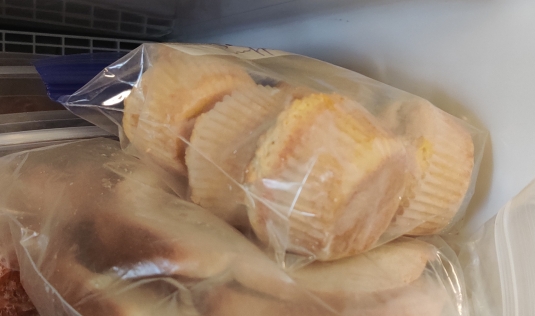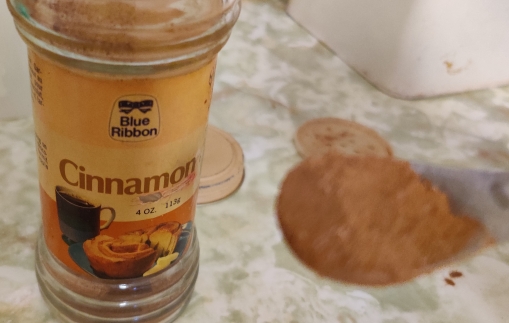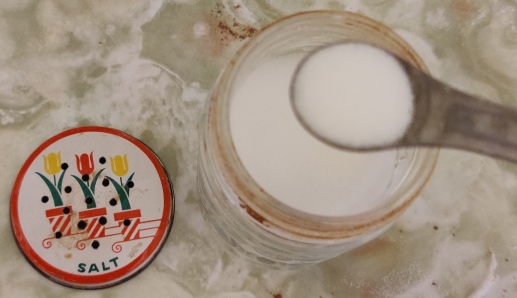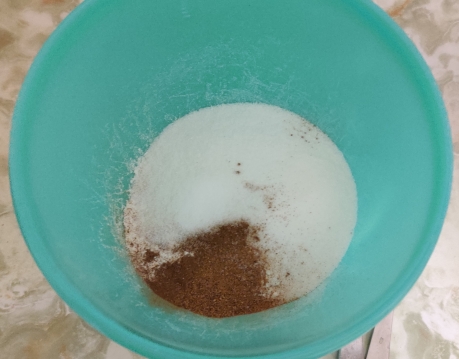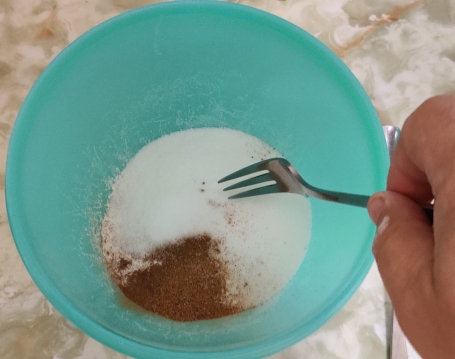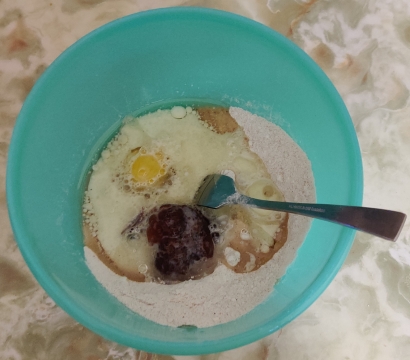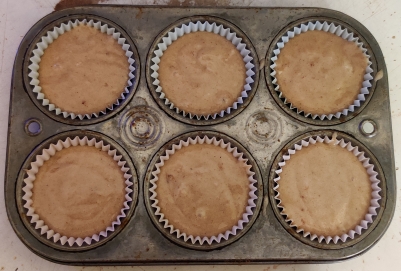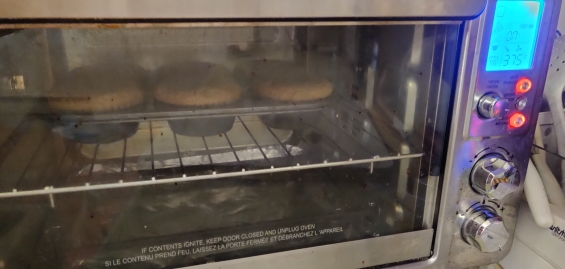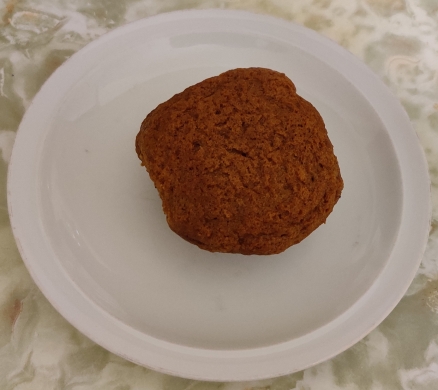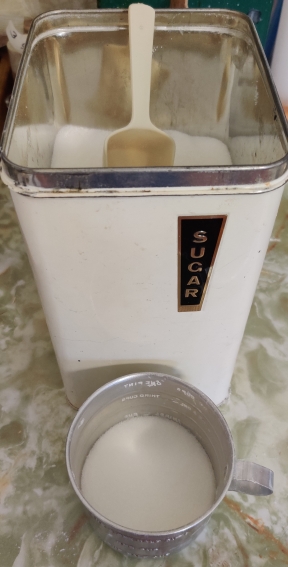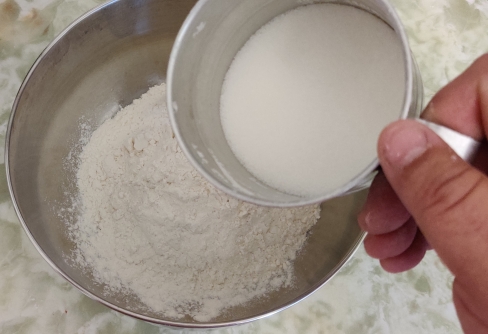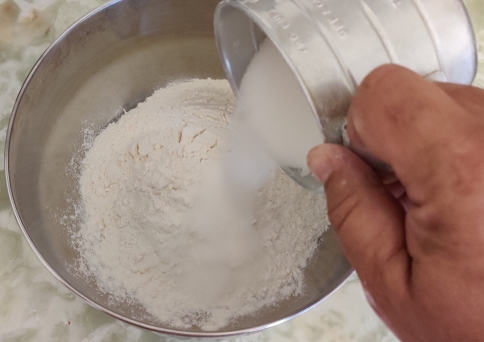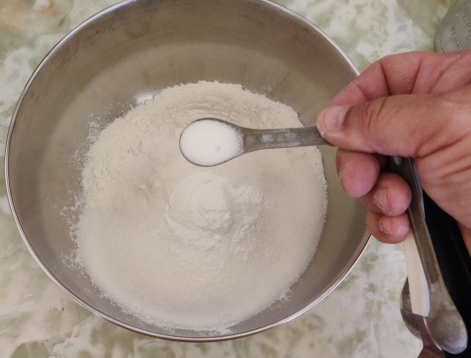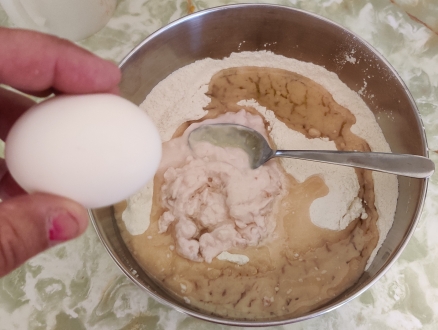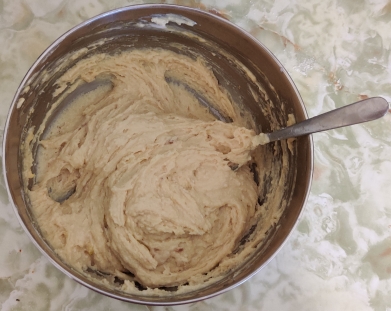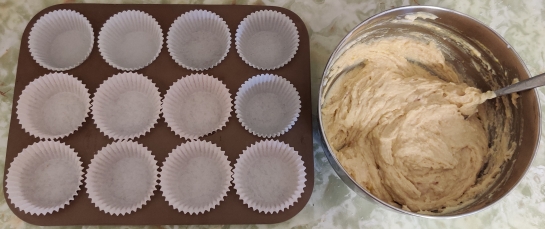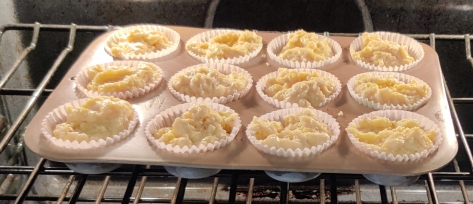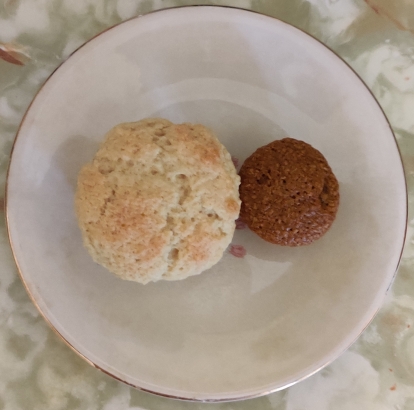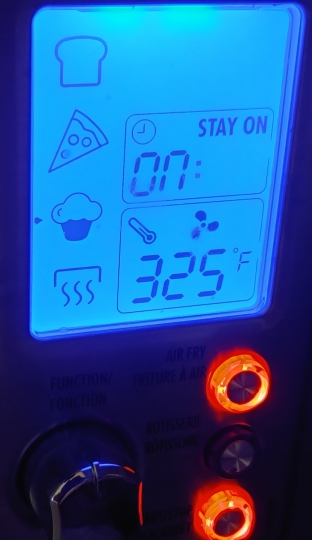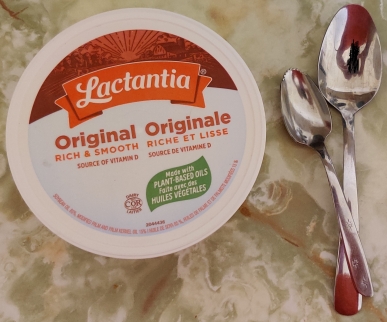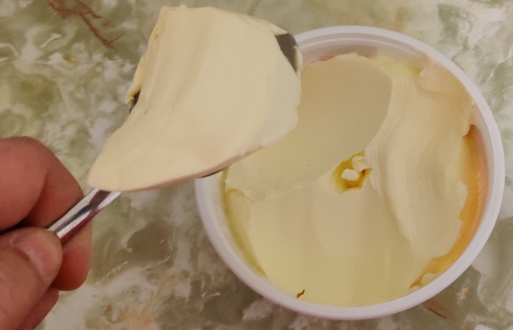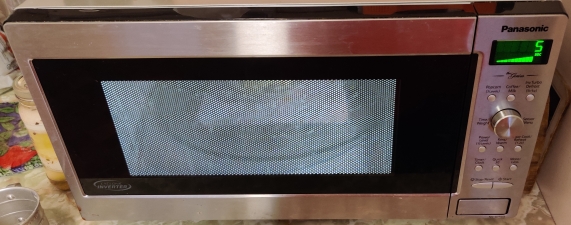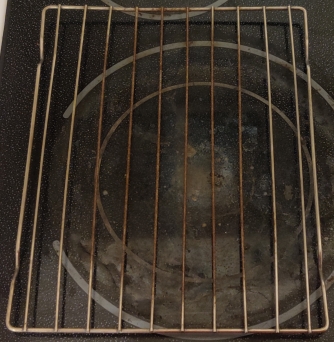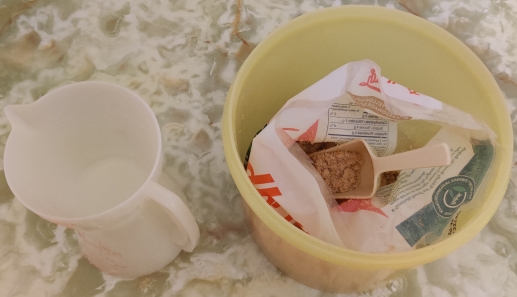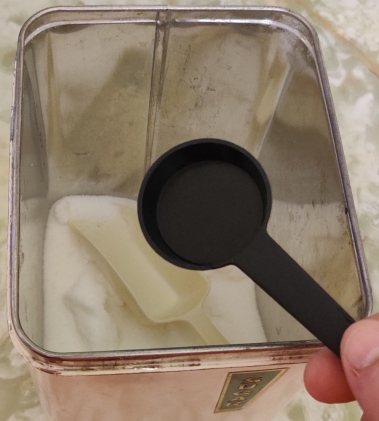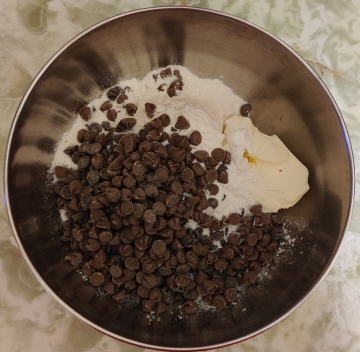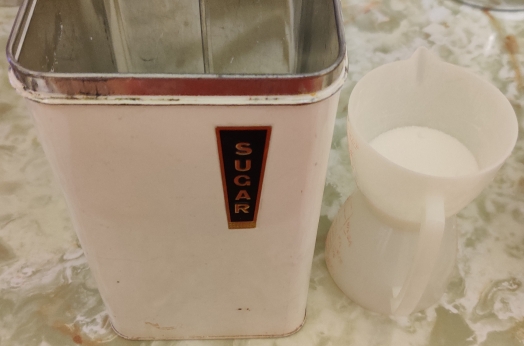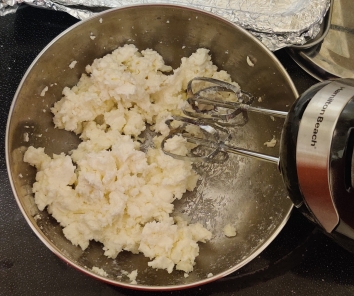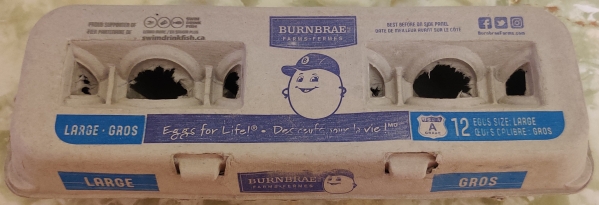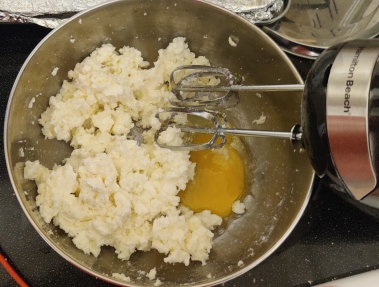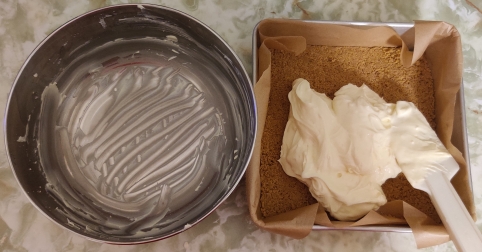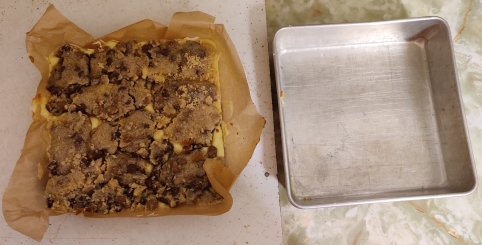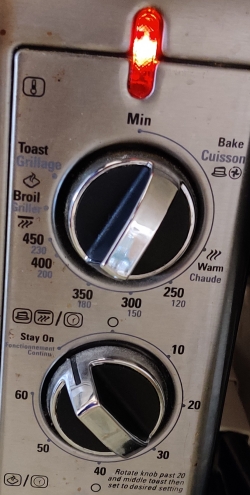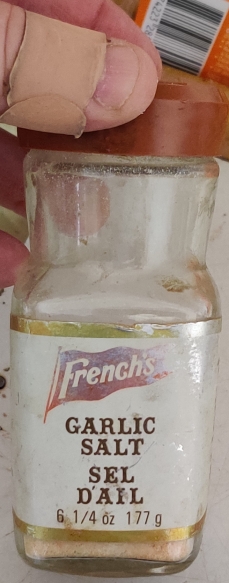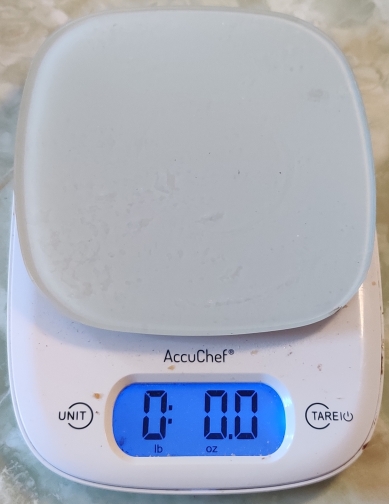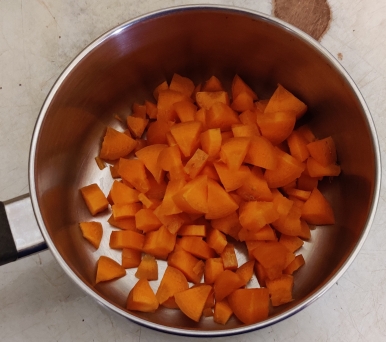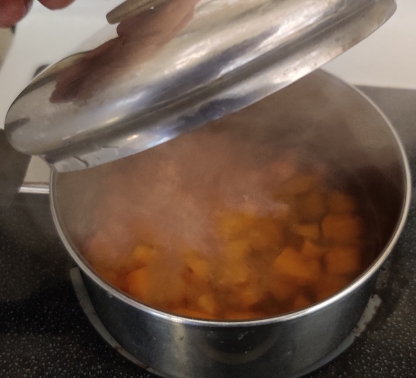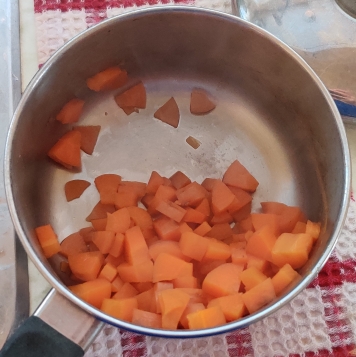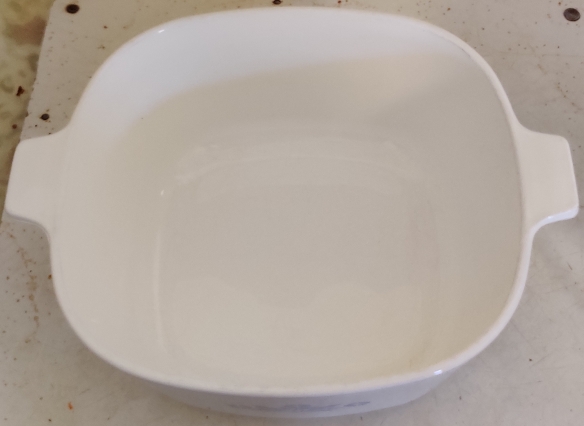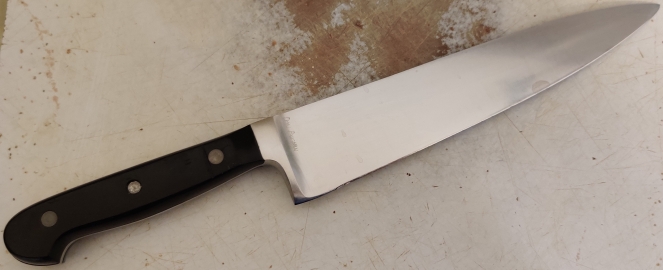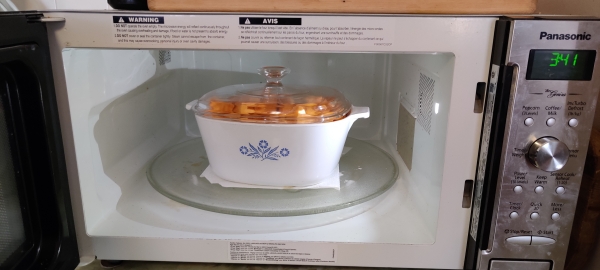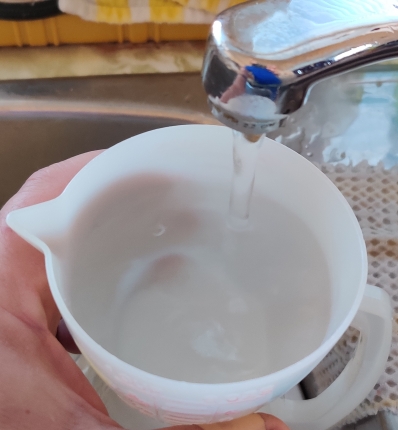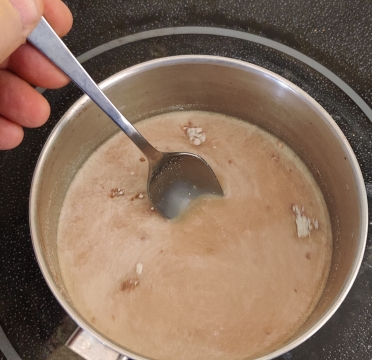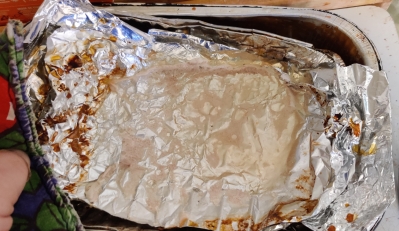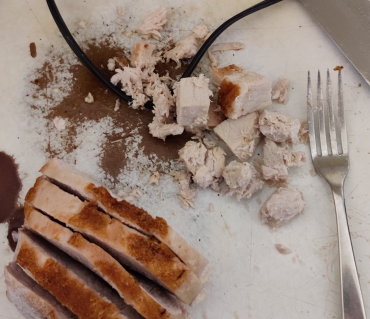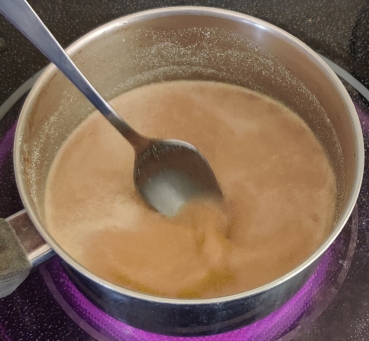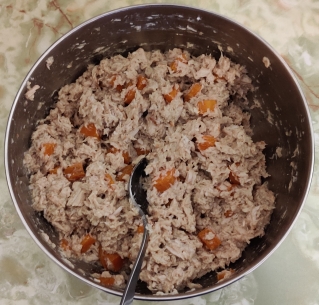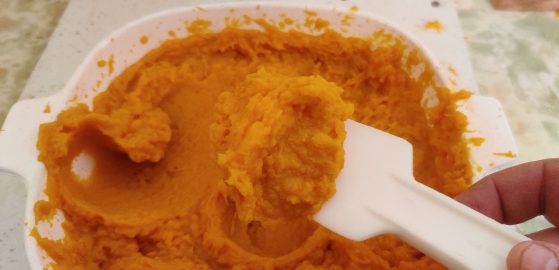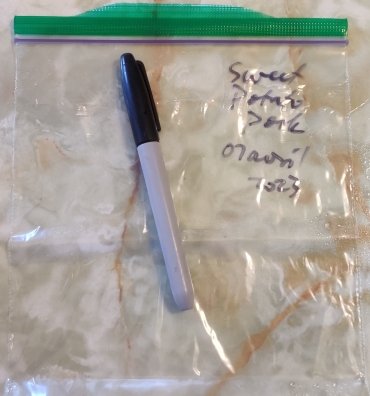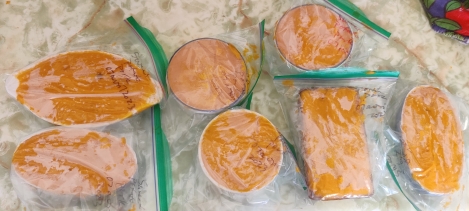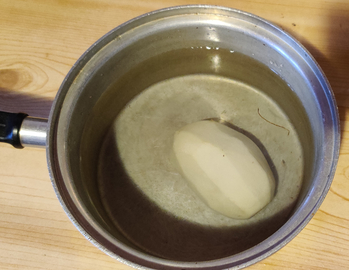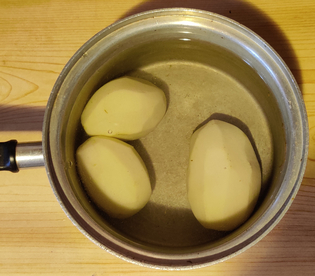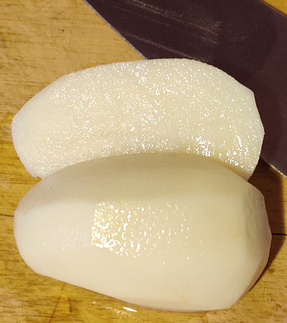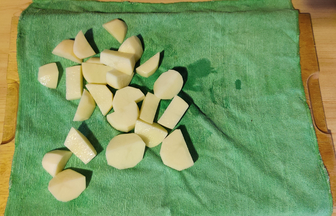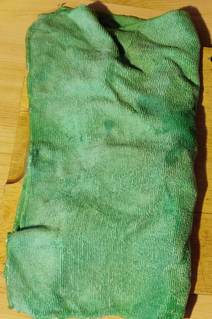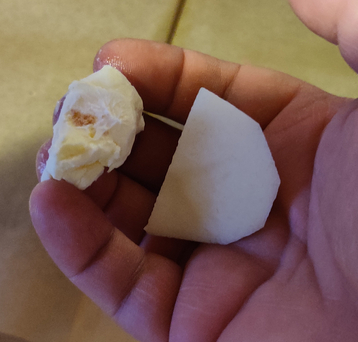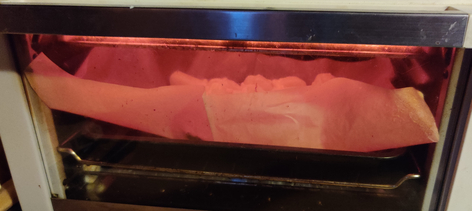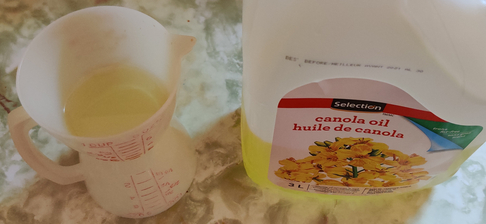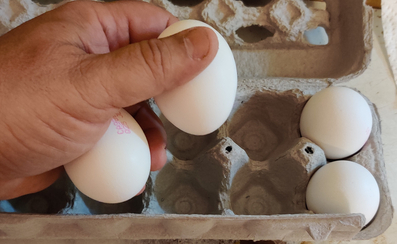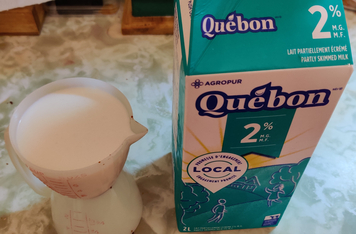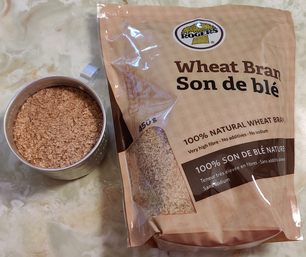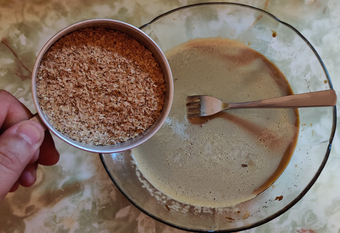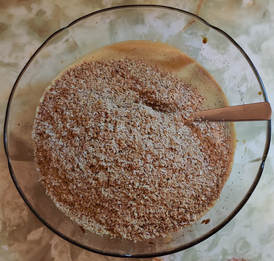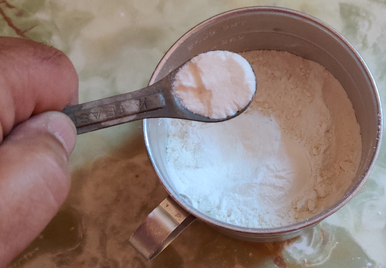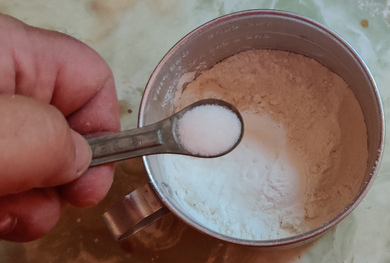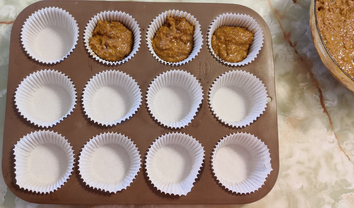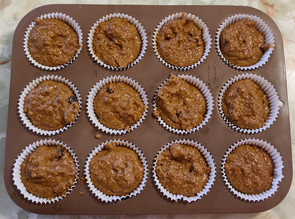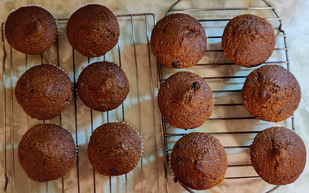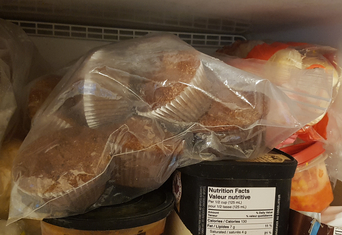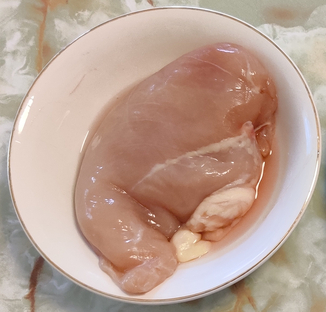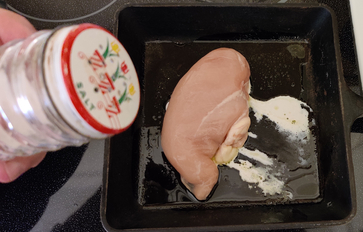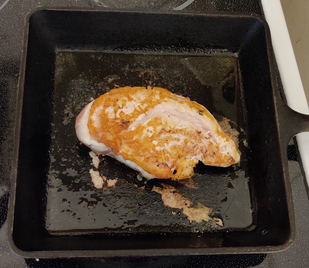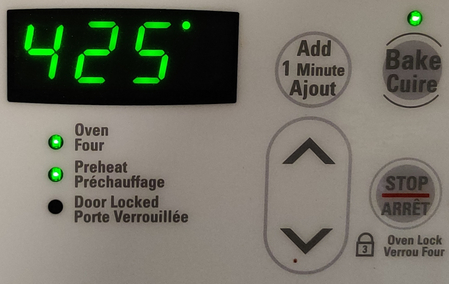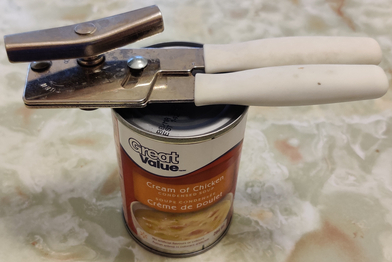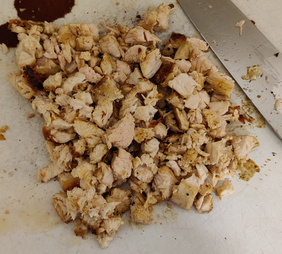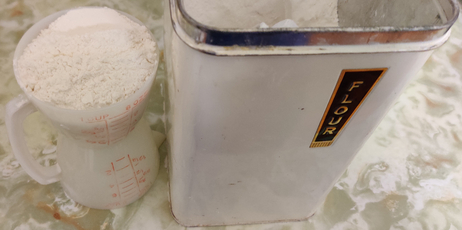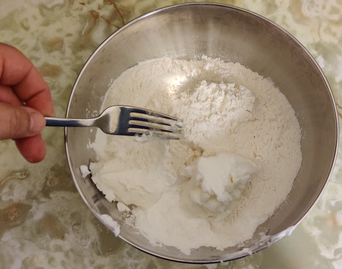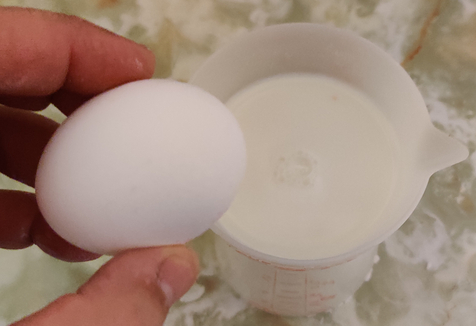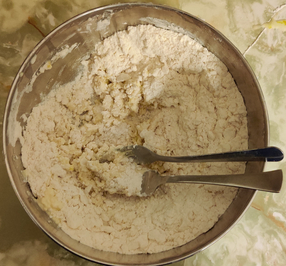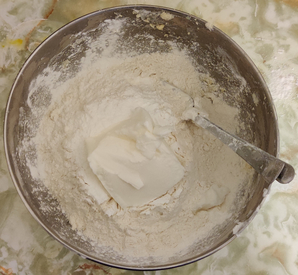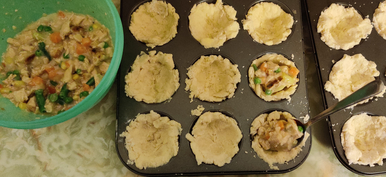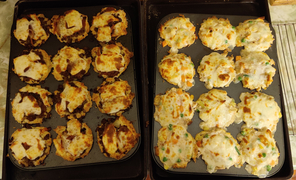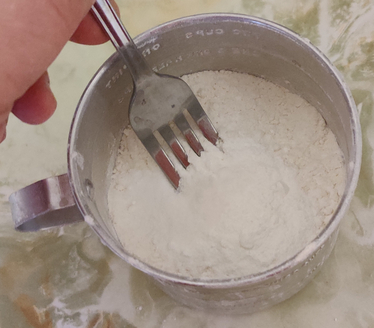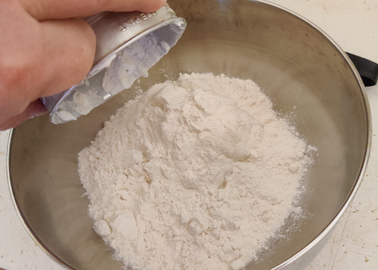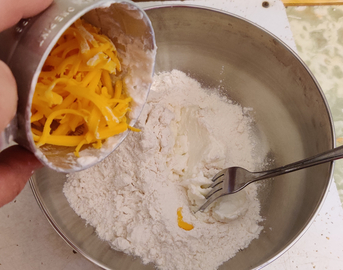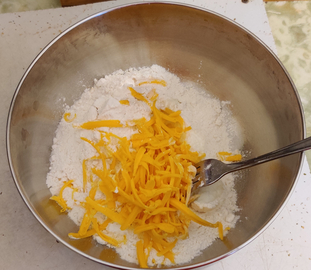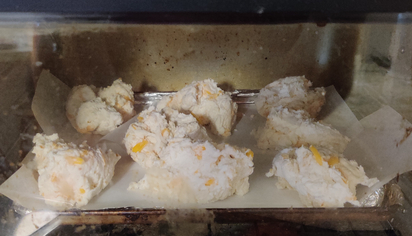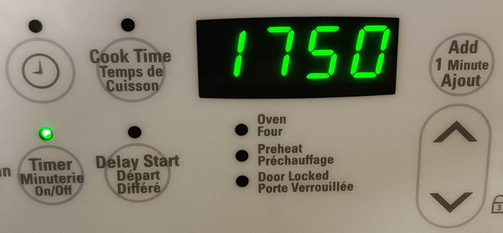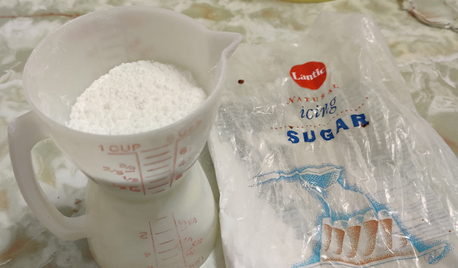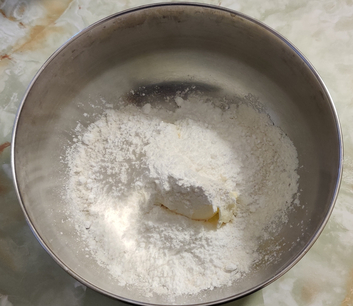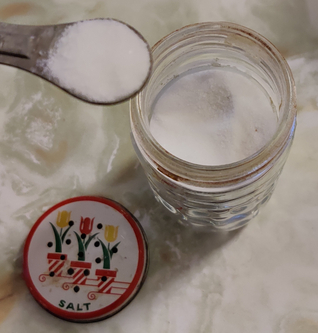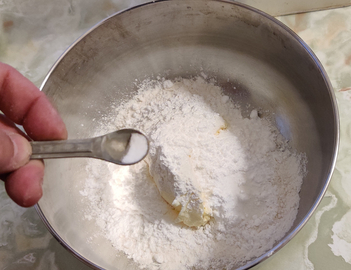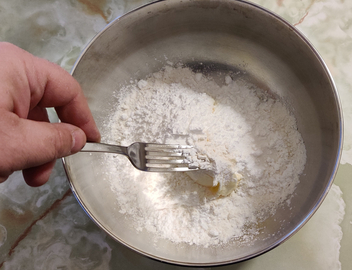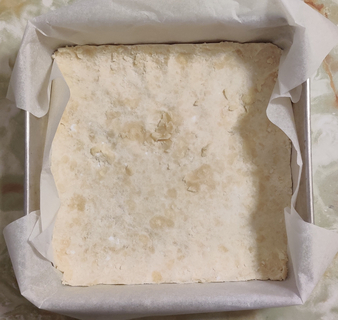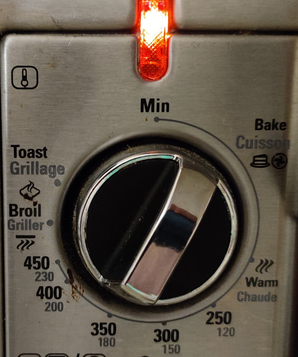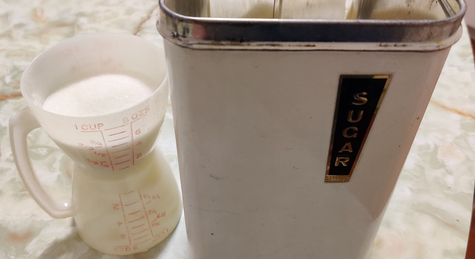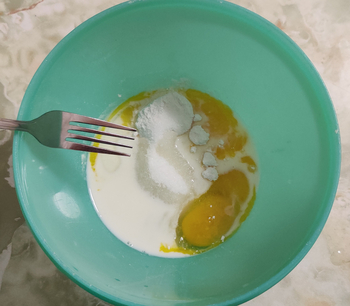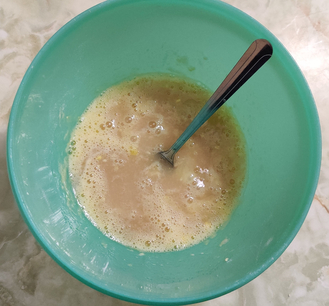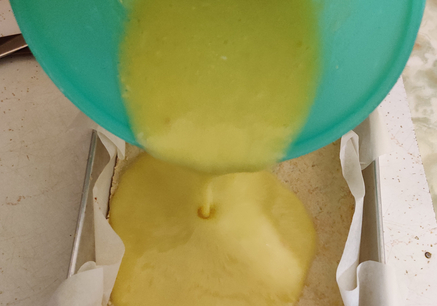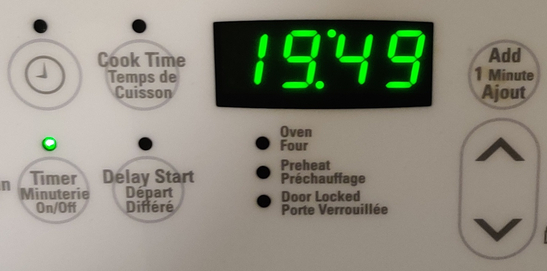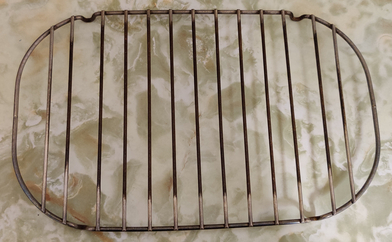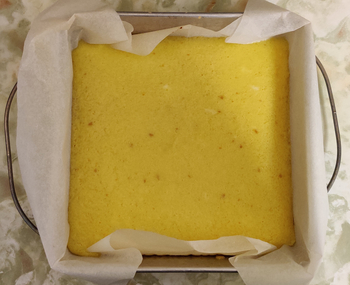I started making these tasty and easy to make muffins as a result of trying to make another kind of muffin (here’s my archive) for my mom, to add a bit more variety to the muffins I make for her. The story to the recipe, for me, had an alluring appeal that seemed to fit the bill. They turned out mostly nicely; however, the experience unfortunately taught me that when a recipe calls for unsalted butter — such as for the topping, especially since it also calls for a “pinch of kosher salt” — one should use unsalted butter. The resulting topping had just enough saltiness, however mild that it was, such that while of course the muffins were really nice, the slight saltiness was a distraction that did not appeal to my mom. (I enjoyed the rest of the muffins, but I agreed with her regarding the distraction.) In the process, I decided that the amount of effort required to execute the recipe was a bit more than I cared for.
As a result though, I had some sour cream for which I had no further use, since I don’t have a taste for sour cream by itself, nor does my mom ask for it for other dishes. And, I was still in the position of needing another muffin recipe to add a bit of variety for Mom. I looked up “sour cream muffins” or somesuch on the internet, and I landed on a recipe here (here’s my archive), which I adjusted down to a half-batch of six muffins that can be easily and quickly made in a countertop convection oven, and which of course scales up to a dozen or more muffins at a time.
Note: Some of the photos were taken somewhat or a bit more out of order, or were outright recreations — albeit all during the preparation of, or immediately after baking, the same batch of muffins, including separately preparing the wet and dry ingredients the night before baking them fresh the morning of for breakfast for Mom — but are presented here in the order presented below for the sake of the narrative.
Making the muffins:
The countertop convection oven was preheated to 350F:


A baking tin and paper muffin liners were taken out:

Paper muffin liners were placed in the wells:


Flour and a measuring cup were taken out:

Flour was measured out:

The flour was transferred to a mixing bowl:




Sugar and a measuring cup were taken out, and sugar was measured out::
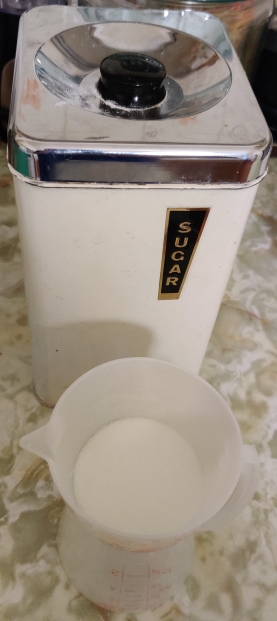
The sugar was transferred to the mixing bowl with the flour:

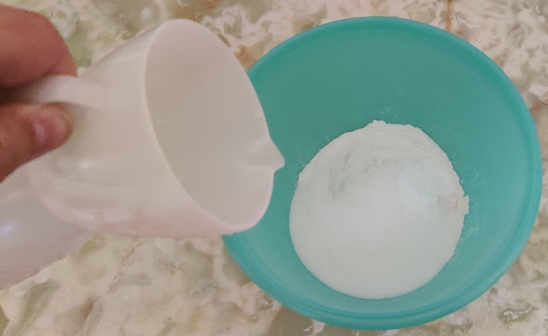
Baking soda and measuring spoons were taken out:
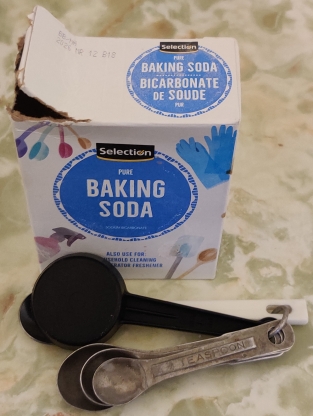
Baking soda was measured out:
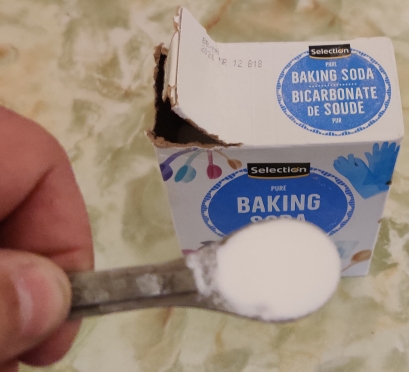
The baking soda was transferred to the mixing bowl with the flour and sugar:
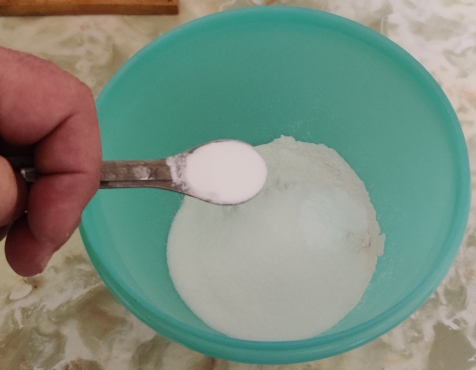
Salt and measuring spoons were taken out:

Salt was measured out:

The salt was transferred to the bowl with the flour, sugar, and baking soda:

Nutmeg was taken out:

Nutmeg was measured out:

Nutmeg was transferred to the bowl with the flour, sugar, baking soda, and salt:


A fork was taken out:

The dry ingredients were mixed with the fork:


Sour cream and a measuring cup were taken out:

The sour cream was measured out, and since I was missing a very small amount, I topped it up with a bit of milk:
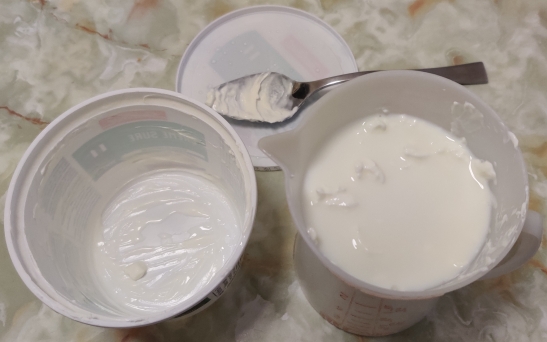
The sour cream was transferred back to the plastic container:

Vegetable oil and a measuring cup were taken out, and the oil was measured out:
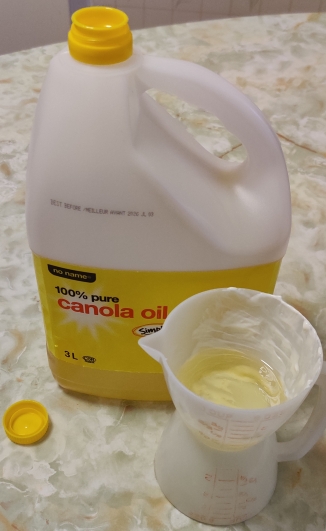
The vegetable oil was transferred to the container with the sour cream:



Eggs were taken out:

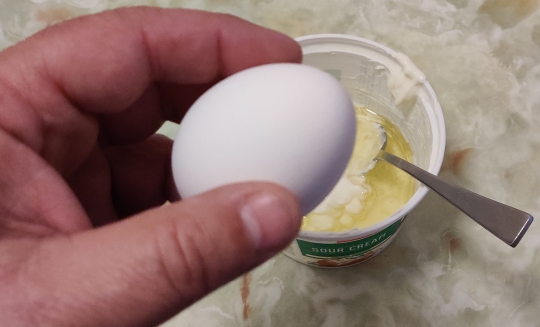
The egg was cracked with a spoon:

The egg was transferred to the container with the sour cream and vegetable oil
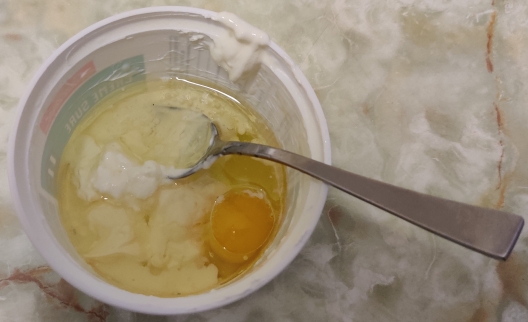
Vanilla extract and measuring spoons were taken out:

The vanilla extract was measured out:

The vanilla extract was transferred to the container with the sour cream, vegetable oil, and egg:

The wet ingredients were mixed together:

(As mentioned earlier, at this point, the container had been sealed and placed in the refrigerator overnight, and the dry ingredients had been sealed and kept on the counter overnight; as well, immediately prior to the next step listed below is when the countertop convection oven had actually been turned on and preheated.)
The wet ingredients were brought over to the dry ingredients, and a clean fork and spoon were taken out:
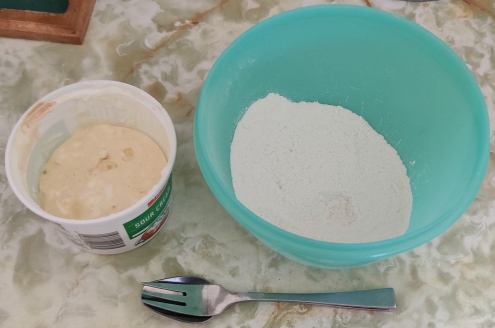
The wet ingredients were transferred to the bowl with the dry ingredients:


The last bits of the wet ingredients were scraped into the bowl using a spoon:

A fork was taken out to start mixing the wet and dry ingredients:

The wet and dry ingredients were mixed together with the fork:

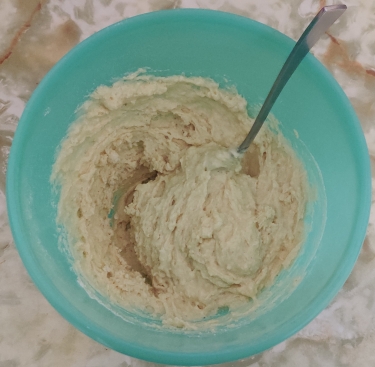
The baking tin with the paper muffin liners was brought over to the bowl with the mixed ingredients:
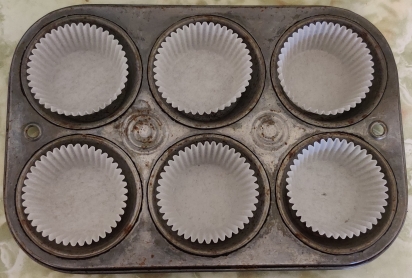
The muffin dough was transferred to the paper muffin liners in the baking tin:


The muffin tin filled with muffin dough was placed in the preheated countertop convection oven …

… and a timer was set to 22 minutes:

While the muffins were baking, a cooling rack was taken out:

At about half-way (after about 11 minutes), the baking tin was rotated in the countertop convection oven, to help ensure even baking:

… and at this point, the muffins had clearly begun to rise:

At the end of the baking period, here are the fully baked muffins, which had begun to brown:
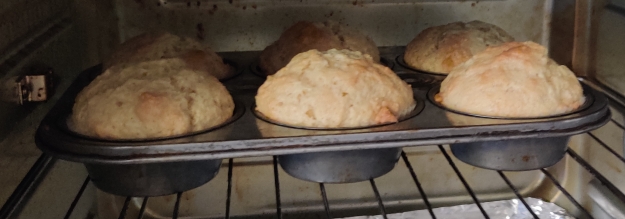
The muffin tin was taken out of the countertop convection oven and placed on a board, ready for the muffins to be removed from the baking tin, and placed on the cooling rack:
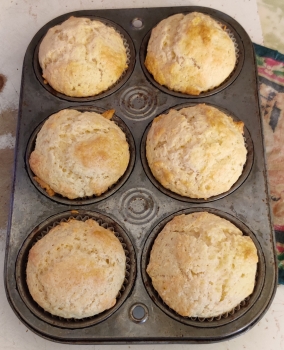
The muffins were immediately — hot! hot! hot! — removed from the muffin baking tin …

… and placed on the cooling rack:
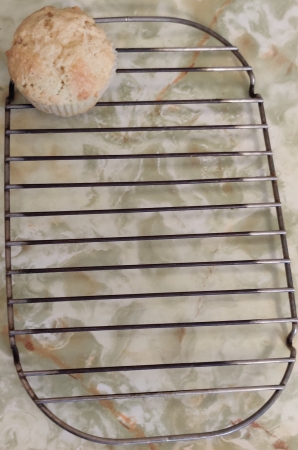
… which was continued until all the muffins …
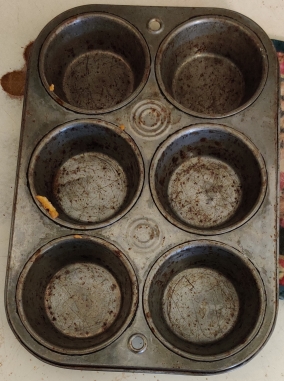
… had been transferred to the cooling rack:

Here’s the bottom of a muffin that had sufficiently cooled in order to safely handle it:

A still warm and definitely fresh! muffin was placed on a plate, and the paper liner was carefully removed (so as to not tear off pieces from the muffin):

… and the muffin was ready to serve to Mom, along with a cup of coffee:

Of course, Mom said that the muffin was tasty!
After the muffins had completely cooled, a plastic freezer bag that was previously used for freezing sour cream muffins was taken out:
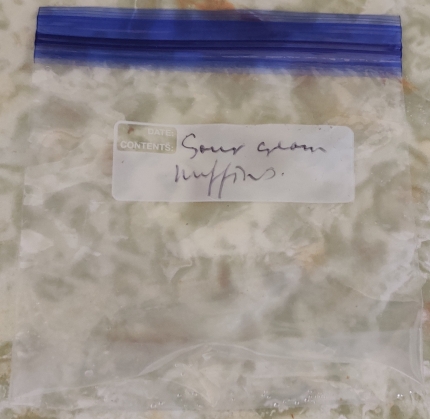
The bag was opened, and a cooled muffin was placed inside the bag:
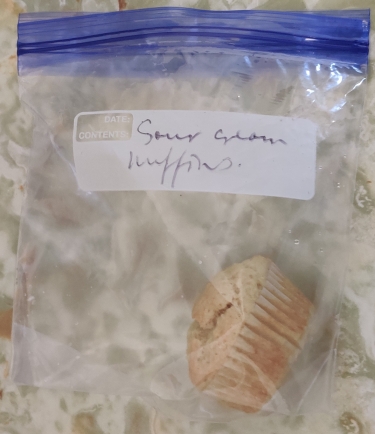
… and the rest of the cooled muffins were placed inside the bag:

The freezer bag was sealed, and placed in the freezer, for future enjoying by Mom!
